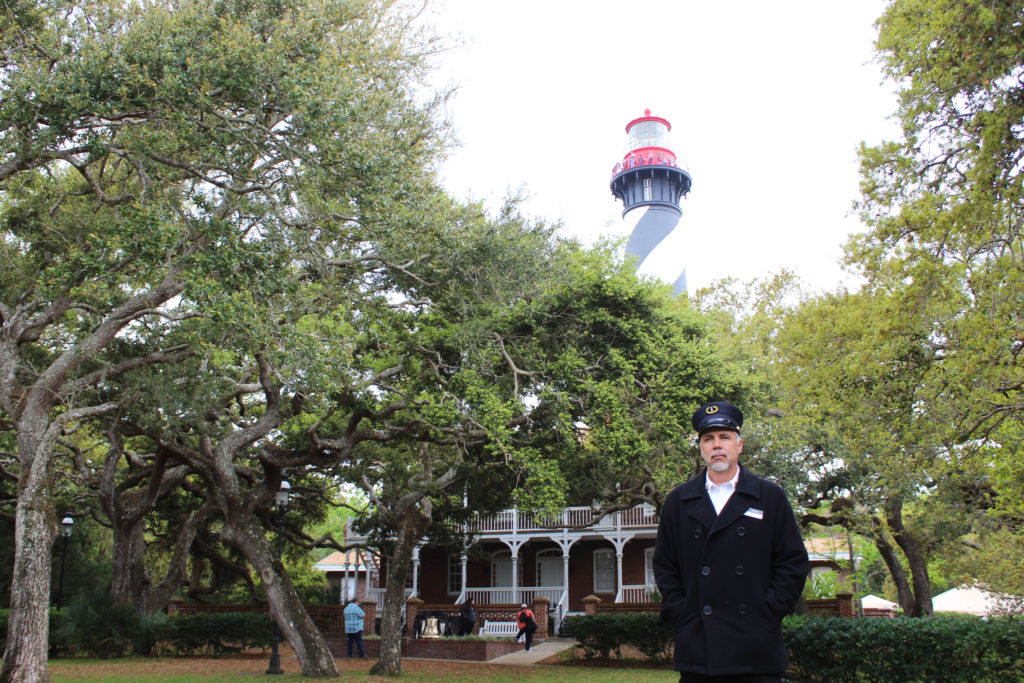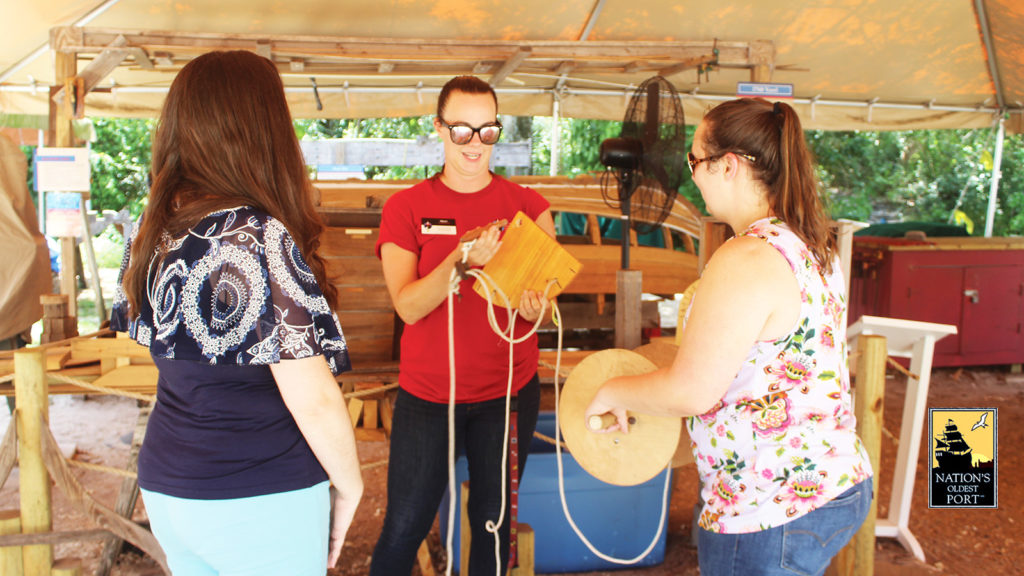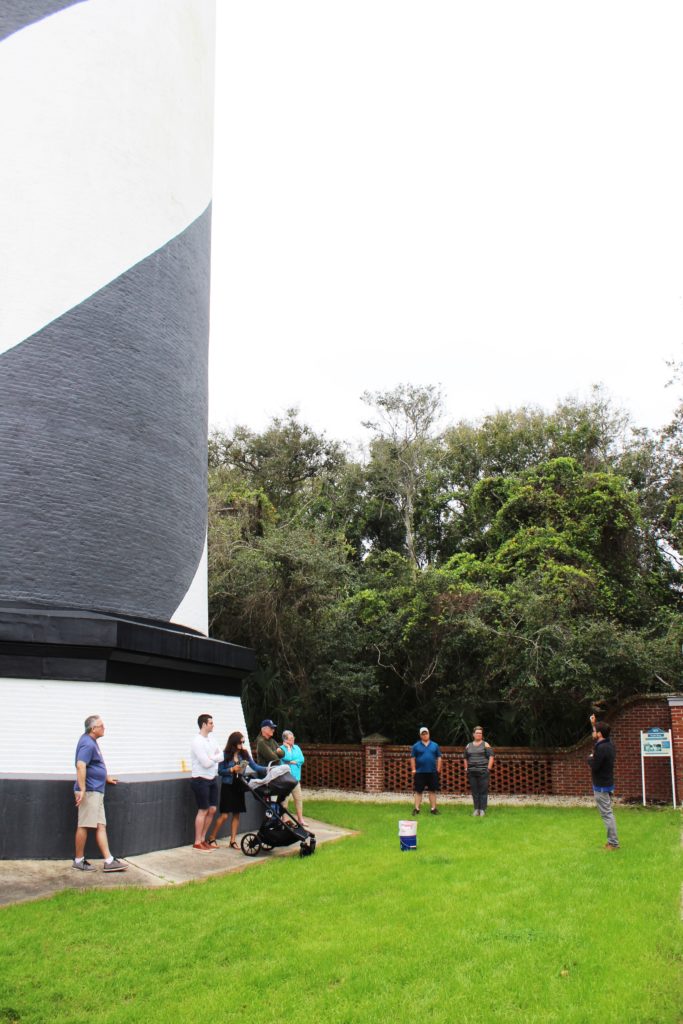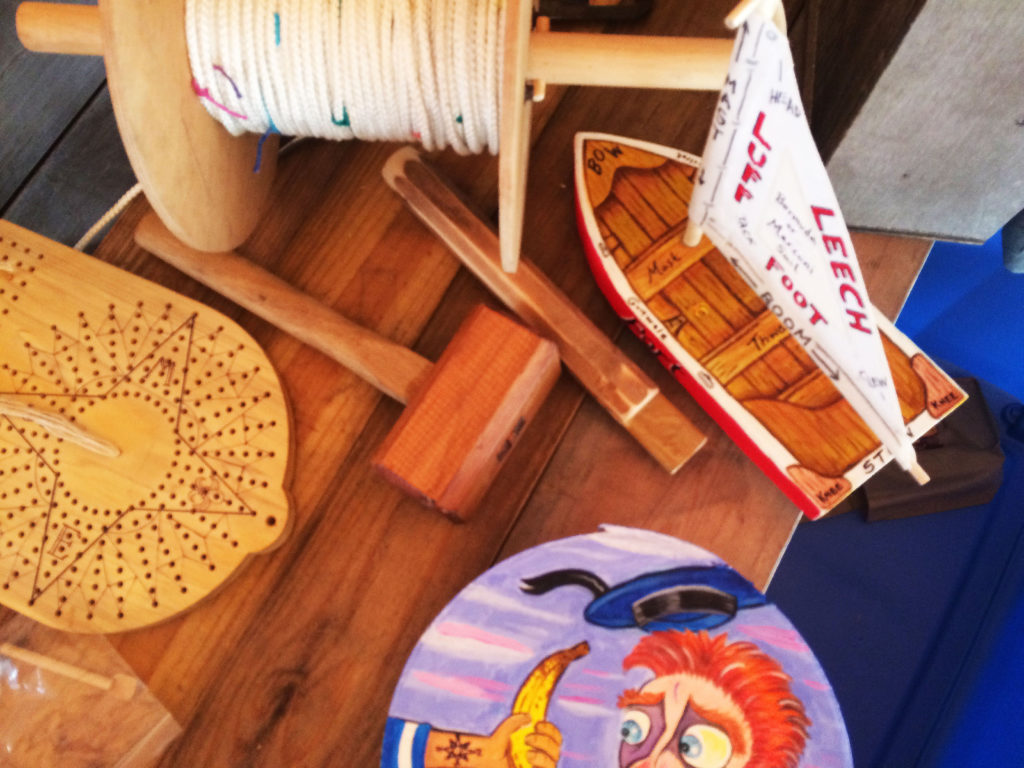Guests to the St. Augustine Lighthouse & Maritime Museum can now learn even more about the maritime history of our area. New Nation’s Oldest Port® Demos reveal stories about daily life of a St. Augustine Lighthouse Keeper, how sailors navigated the seas before GPS, and how our Lighthouse Archaeologists discover artifacts underwater on shipwrecks – along with other maritime topics during these interactive and fun experiences.

“Guests can now customize their visit to the Museum through a wide variety of location, theme and time options, making their experience more meaningful to them,” said Brenda Swann, Director of the Interpretive Division at the St. Augustine Lighthouse & Maritime Museum.
“These fun demos create memories and a connection to the historic site and the region’s maritime heritage that will last a lifetime. We love this new opportunity to engage with our visitors!”

at the St. Augustine Lighthouse & Maritime Museum.
Visitors also can take a walk with one of our Lighthouse Keepers (Rick Cain and Jason Smith) and learn about Lighthouse history on a behind the scenes tour. New Keepers’ Tours are held at 10 a.m. and 4 p.m. Tuesdays and Thursdays; and at 10 a.m. Wednesdays. The one-hour tours are $19.95 for adults, $17.95 for seniors and children under 12. Reservations can be made by calling 904-829-0745 or ask in the gift shop.
Nation’s Oldest Port® Demos are included with the cost of admission to the nonprofit Museum. The educational and interactive programs run each half hour from 11 a.m. to 3:30 p.m. on the grounds. See the list of demos below.

Regular admission fees to the Museum are $12.95 for adults; $10.95 for seniors and children under 12; and free for children less than 44 inches (unable to climb the tower). St. Johns County residents with ID can pay for one day and receive a pass for a complete calendar year. Membership packages also are available. Hours are 9 a.m. to 6 p.m. daily through Memorial Day, then 9 a.m. to 7 p.m. seven days a week during summer.
For more details about the St. Augustine Lighthouse & Maritime Museum, visit staugustinelighthouse.org or call 904-829-0745. Stay updated on social media at facebook.com/staugustinelighthouse, Instagram.com/stauglighthouse, and twitter.com/firstlighthouse

New Nation’s Oldest Port® Programs
- Dead Reckoning: Learn how sailors navigated the high seas and inland waters before GPS, radar and accurate maps.
- Tools of the Trade: Discover how early boatwrights bent and shaped wooden beams and made waterproof craft.
- Sailor Lingo and Superstitions: Hear common and not-so-common phrases and words that were a matter of life and death aboard ship.
- Bucket Challenge: Find out if you could handle being the keeper of the St. Augustine Lighthouse in the late 1800s at this fun program that demonstrates and discusses daily life of the keepers.
- Improv at the St. Augustine Lighthouse: Help your docent decide what stories to tell from Lighthouse past and be surprised by what you hear!
- Lighting the Way: See how lighthouses throw light 19-25 miles out to sea and learn the importance of lighthouses to early shipping and navigation.
- Finding Shipwrecks and Why They Matter: Learn how archaeologists search for and find shipwrecks buried under the ocean floor and discover why these nonrenewable resources are important.
- Stories from Beneath the Waves: Working underwater in low visibility offshore of St. Augustine, archaeologists often document shipwrecks using only their sense of touch. Try your hand at this and “see” how knowing the artifacts and their location on the shipwreck reveal stories not otherwise known.
- That’s an Artifact? Uncover more stories in the lab and find out how artifacts unlock the secrets of shipwrecks and the people onboard.
For additional information, visit www.staugustinelighthouse.org

